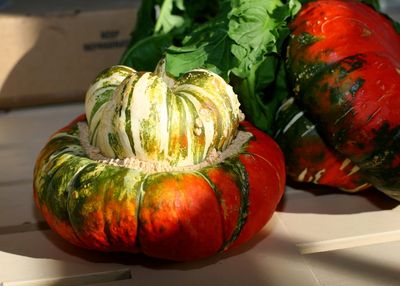About Turban Squash Plants
Exactly what is a turban squash? It’s a variety of winter squash that, with time, becomes a hollow gourd. Attractive, with an acorn shape, the thick skin is often colorfully mottled or striped. The bottom is most often orange, with colorful stripes and spots, and the top half has a light background for the unique splotches. A beautiful specimen, this of the Curcurbita family and related to pumpkins, squash, and gourds. It’s heavy, with a normal size weighing in at about five pounds (2.5 kg.). It’s most easily peeled after a few minutes in boiling water, revealing yellow flesh. Use the unpeeled squash for stuffing, baking, or roasting. That said, they are rarely peeled, though, as it is most often used as decoration. Also called Turks Turban (botanically Cucurbita maxima), some simply call them turban gourd plants or Mexican hats. You might consider growing turban squash for your own interesting decorations.
How to Grow Turk’s Turban Squash Plants
Learning how to grow Turk’s Turban squash is similar to growing pumpkins and other running squash. The leaves are huge and the vines are quite long. Train the vines to go in the most convenient direction, moving them a little each day. Eventually, if you like, vines can be buried to have another root system sending energy to the fruit. As fruits develop, make sure they are not going to rot on damp soil. Use a paver or a block to keep them off the ground. According to Turk’s Turban squash info, this plant needs up to 120 days to maturity, 10 to 20 days for seeds to sprout. Get seeds started early indoors, especially if you have a short growing season. When seeds have a few leaves and all danger of frost is over, plant them into hills a few feet (1-1.5 m.) apart in a sunny area. Remember, the vines will spread a few feet (1-1.5 m.). Amend soil prior to planting with well-composted materials and worm castings, if you have them. These plants are heavy feeders and your final fruit is best developed with regular feedings. Keep soil moist, not wet, and keep an eye out for pests. Squash bugs, cucumber beetles, and squash vine borers are particularly attracted to this plant. Treat with insecticidal soap before turning to commercial insecticides. Deer and rabbits are sometimes a problem, which can possibly be prevented with a couple of layers of chicken wire over growing fruits. Harvest when the shell hardens. Use them in a basket or porch display with pumpkins and other gourds and winter squash types.
